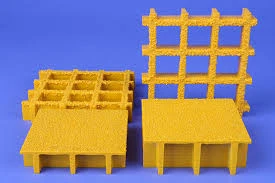loading...
- No. 9, Xingyuan South Street, Dongwaihuan Road, Zaoqiang County, Hengshui, Hebei, China
- admin@zjcomposites.com
- +86 15097380338
- Welcome to visit our website!
waste water treatment equipment
Wastewater Treatment Equipment An Overview
Water is one of the most vital natural resources on our planet, and as the population grows and industrial activities expand, the need for effective wastewater treatment becomes increasingly critical. Wastewater, which is water that has been contaminated by human activity, is a significant environmental concern. Without proper treatment, it can pose serious risks to public health and ecosystems. Here, we discuss various types of wastewater treatment equipment, their functions, and their importance in maintaining environmental health.
Importance of Wastewater Treatment
Before delving into the equipment used in wastewater treatment, it is essential to understand why this process is crucial. Wastewater can contain a variety of pollutants, including pathogens, nutrients, and heavy metals, which can harm aquatic life and human health if released untreated into the environment. The process of wastewater treatment not only helps in reducing these contaminants but also in conserving water resources through recycling.
Types of Wastewater Treatment Equipment
1. Screening Equipment The first step in wastewater treatment typically involves screening, which removes large solids like trash, leaves, and plastic debris. Screens can be manual or automatic, and they help to prevent damage to downstream equipment.
2. Sedimentation Tanks After screening, the water typically moves to sedimentation tanks, where heavier solids settle to the bottom. This process, known as gravity settling, allows for the removal of suspended solids and larger particles.
waste water treatment equipment

3. Biological Treatment Systems These systems use microorganisms to break down organic matter in wastewater. Common types include activated sludge systems, trickling filters, and biofilm reactors. These biological processes are crucial for reducing the biochemical oxygen demand (BOD) of the water, which indicates the amount of organic material present.
4. Chemical Treatment Units Chemicals are often added to wastewater to aid in the removal of specific contaminants. Coagulation and flocculation processes, where chemicals are introduced to aggregate small particles into larger ones for easier removal, are widely used. Additionally, disinfection systems, often utilizing chlorine, ultraviolet light, or ozone, are employed to eliminate pathogens before the treated water is discharged or reused.
5. Membrane Filtration Systems Advanced techniques such as reverse osmosis and microfiltration are increasingly employed for the removal of smaller contaminants. These systems are effective in treating wastewater for reuse in irrigation or industrial applications.
6. Sludge Management Equipment The byproduct of the treatment process is sludge, which contains concentrated waste materials. Proper management of sludge is essential for environmental safety. Dewatering units, such as centrifuges and belt presses, help reduce the volume of sludge, making it easier to dispose of or process further.
Conclusion
Wastewater treatment equipment plays a vital role in protecting our environment and public health. As technology continues to evolve, the efficiency and effectiveness of these systems improve, allowing for cleaner water to be returned to the ecosystem. Investment in advanced wastewater treatment technologies not only addresses the growing challenges posed by wastewater disposal but also promotes sustainable water management practices. As we move towards a more sustainable future, the ongoing development and implementation of wastewater treatment equipment will be essential for tackling global water scarcity and environmental pollution challenges.
-
The Rise of FRP Profiles: Strong, Lightweight, and Built to LastNewsJul.14,2025
-
SMC Panel Tanks: A Modern Water Storage Solution for All EnvironmentsNewsJul.14,2025
-
GRP Grating: A Modern Solution for Safe and Durable Access SystemsNewsJul.14,2025
-
Galvanized Steel Water Tanks: Durable, Reliable, and Ready for UseNewsJul.14,2025
-
FRP Mini Mesh Grating: The Safer, Smarter Flooring SolutionNewsJul.14,2025
-
Exploring FRP Vessels: Durable Solutions for Modern Fluid HandlingNewsJul.14,2025
-
GRP Structures: The Future of Lightweight, High-Performance EngineeringNewsJun.20,2025
